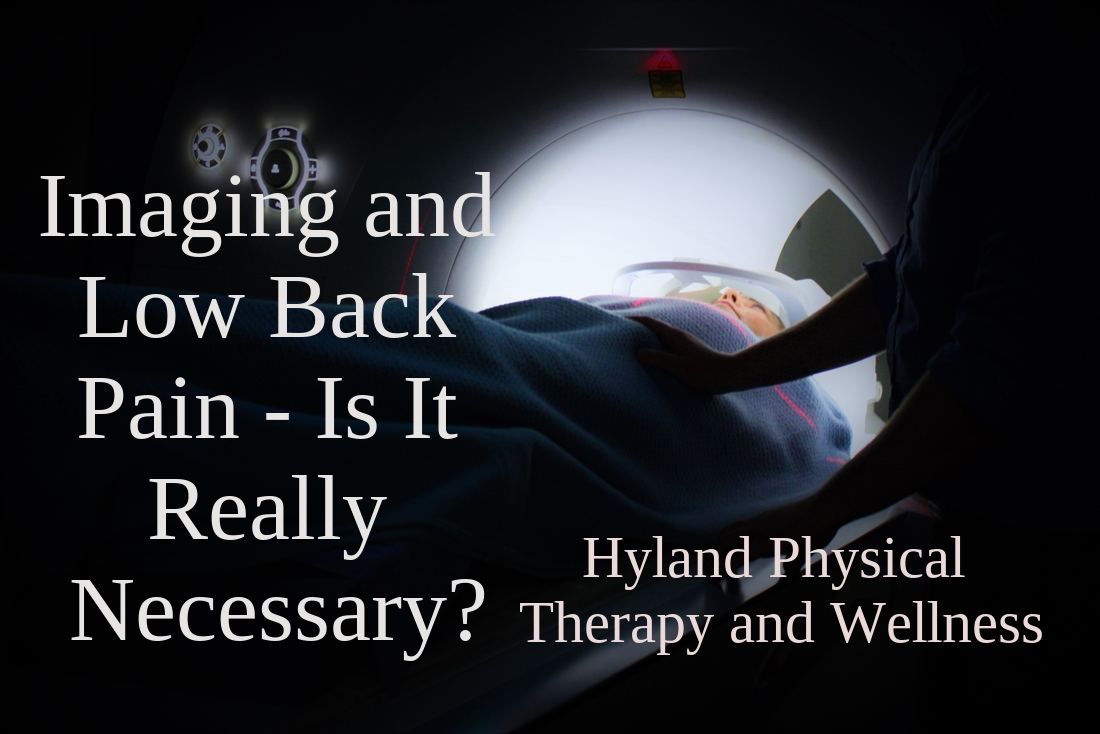|
Low back pain is common…VERY common. According to an article published by the American Physical Therapy Association in November of 2017, low back pain (LBP) affects nearly two-thirds of Americans! There is a great need for education on prevention of LBP as well as what to do once you begin to experience it yourself.
The cost of LBP to the United States healthcare system is enormous, and much of this cost is related to surgical intervention. Though surgery is by far the most expensive intervention for LBP, orders for musculoskeletal imaging, such as MRI, CT, and X-rays, are also quite costly. This is important because forward-thinking healthcare should be working towards reducing unnecessary costs to the consumer. The fact of the matter is that non-specific LBP does not need to be "diagnosed" through imaging in order to be treated by a physical therapist. If you were to do X-rays and MRIs of the spines of the majority of Americans, even those in their 20s, you would find impairments. However, many of those same Americans would also have never experienced LBP. Every part of the human body ages, including the joints and the intervertebral disks of the back. Through the natural aging process those disks lose water content resulting in the gradual loss of space between the vertebrae. Furthermore, joints endure natural wear and tear over time that may result in arthritis due to inflammation of the cartilage. These impairments do not always cause pain and should not be the sole reason that clients are referred out for surgery or even for physical therapy. I have treated many clients with non-specific LBP, without ever having seen a scan or X-ray, and have successfully resolved or drastically improved their symptoms allowing them to return to leisure activities and family life. In one particular case, my evaluation concluded that adhesions in the connective tissue (tendons, ligaments, etc.) were the cause of the discomfort in addition to restrictions in range of motion. In other words, the cause of LBP was not spinal. However,you can easily imagine that imaging prior to physical therapy might have resulted in a misdiagnosis of "degenerative joint disease" or "degenerative disk disease" for this client, which could then have led to unnecessary, invasive, and possibly unsuccessful treatments such as injections or surgery. As a Doctor of Physical Therapy I am highly trained in differential diagnosis. Therefore, I am able to distinguish between a condition that I have the knowledge and skills to treat and one that merits immediate medical attention. In another case that I will never forget, I evaluated a client, who was referred to me directly by her primary care physician. An MRI was performed prior to her referral, but the results had not yet been reviewed by the physician by the time she arrived for her physical therapy evaluation. By asking probing questions, carefully listening to her description of symptoms, and examining her physically, I was able to determine that something was seriously wrong and that she needed immediate medical help, not physical therapy. A motor vehicle accident that caused severe flexion of her spine was the instigator of her symptoms. She arrived at my clinic in severe pain and was visibly in tears as I was evaluating her. She described pain that radiated to both rib cages, buttocks, and legs. This report was an immediatered flag and prompted me to ask whether she had experienced any changes in bowel or bladder function. With a look of great surprise, she replied that she had indeed been unable to hold her urine or feces since the accident. This is a serious sign of damage to the central nervous system and a potential medical emergency. I immediately stopped my evaluation and called her physician to report that I suspected a mid-thoracic level posterior-central disk herniation. I informed my client that physical therapy was not recommended and reassured her that I was in communication with her physician. A half hour after our initial conversation, her physician called me again because he had just received the MRI results and was shocked at what he saw – a posterior-central disk herniation pressing into the spinal cord – a very dangerous medical situation. He thanked me profusely for communicating with him and stated that he had already placed a call to a neurosurgeon for immediate follow-up for the client. Although it was not the best news, my client was able to get the care that she needed based on my prompt communication with her physician. The main point of this article is not to say that imaging in the presence of LBP is never necessary, but rather that it is over-utilized in our health care system. I highly recommend that if you or a loved one have LBP, you seek the advice of a physical therapist as a first course of action. In most states, a physician referral is not required for you to seek out the help of a physical therapist immediately. The same APTA article mentioned above stated that 37% or fewer of people that experience LBP actually seek professional treatment. Don't be one of those people. Take action and be empowered! |
AuthorDr. Michael Hyland, DPT, CEEAA has been a physical therapist since 2012. He is a Certified Exercise Expert for the Aging Adult and an expert in Parkinson's Disease. He owns Hyland Physical Therapy and Wellness in Broken Arrow, OK Archives
October 2022
Categories
All
|
Proudly powered by Weebly


 RSS Feed
RSS Feed